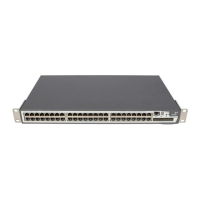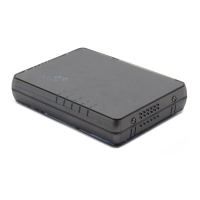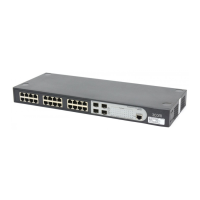ACL Configuration Command List 283
Description
Use the acl command to define an ACL identified by a number, and enter the
corresponding ACL View.
Use the undo acl command to cancel all subitems of an ACL identified by a
number, or cancel the entire ACL.
By default, the ACLs are matched in config order.
After entering a corresponding ACL View, you can use the rule command to
create subitems of this ACL (you can exit the ACL View by using the
quit
command).
Using the match-order, you can specify whether the match order is the user's
configuration order or depth first order (it first matches the rules with a small
range); if not specified, then the user's configuration order will be chosen by
default. Once the matching order of the ACL is specified, you cannot change the
order unless you have cancelled all the subitems. Note that the ACL matching
order is in effect only when the ACL is employed by the software as a means of
data filtering and classification.
For related configurations, refer to the command rule.
Example
Specify depth first order as the match order of number 2000 ACL.
<SW5500>system-view
System View: return to User View with Ctrl+Z
[SW5500]acl number 2000 match-order auto
[SW5500-acl-basic-2000]
display acl Syntax
display acl { all |
acl-number
}
View
All Views
Parameter
all: Displays all ACLs.
acl-number
: Specifies the sequence number of the ACL to be displayed. It can be
a number chosen from 2000 to 4999.
Description
Use the display acl command to view the detailed configuration information
about the ACL, including every rule, sequence number and the number and byte
number of the packets matched with this rule.
The matched times displayed by this command are software matched times,
namely, the matched times of the ACL to be processed by the Switch CPU. You
can use the
traffic-statistic command to calculate the matched times of
hardware during packet-forwarding

